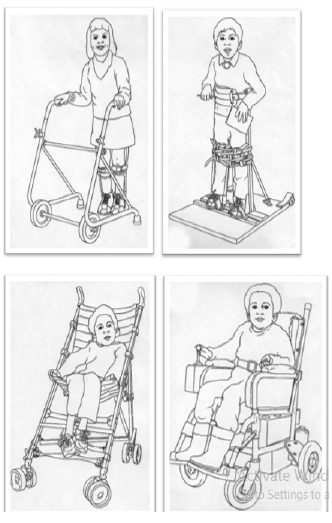Review Article 
 Creative Commons, CC-BY
Creative Commons, CC-BY
Preparing Line Illustrations for Teaching Aid Materials to be used by Children with Special Educational Needs
*Corresponding author:John Robert Burns, John Burns Illustration, 54 Holmfield Road Coventry, West Midlands, CV2 4DE, UK.
Received:April 03, 2023; Published:April 28, 2023
DOI: 10.34297/AJBSR.2023.18.002504
Abstract
Keywords: Special Educational Needs; Colouring-in exercises; Figure Illustration; Technical Illustration
Introduction
As an illustrator and designer working within the medical, health, educational and social fields I have been made aware of the need for teaching aid materials that are relevant to the experiences of children whose particular personal experience may not be readily reflected in the types of games, puzzles and books that those children would encounter during their formative school years. Whilst progress has been made in recent times with regard to storybooks, posters and games that relate to the differing styles of family life that children may experience, within the field of health and special educational needs there still seems to be a paucity of such artefacts that can relate directly to the life experience of children growing up and learning within such circumstances. As an illustrator working in medical, scientific, social and educational fields, I have had the opportunity to work, alongside specialist educational schools and organisations, to produce images for use by children whose educational experience may be required to take place outside of mainstream school environments and to develop within the provision of special educational schools that can cater to the children’s specific requirements. The drawn images presented within this text form an example of the kinds of output that can result from working closely with staff and pupils teaching and learning within these specialist spaces. Firstly, we have to notice that, in addition to regular teaching materials such as books, games, puzzles, charts and posters – including 3D items such as educational toys – there are some specialist items, aids and artefacts that would form part of the everyday experience in schools with a special educational needs provision that would not be regularly seen within mainstream school environments. These items would form part of everyday life and school experience for the children attending such special educational needs schools (Figure 1).
Following an initiative generated by school and local education authority staff, a project was put in place that could provide high quality, specialist teaching aid material that would relate strongly to the children’s own experience and which would have sufficient attention to detail as to provide pictorial, technical and personal interest such that the children could become absorbed in the puzzles, colouring-in and tracing exercises as would be provided by regularly, commercially published puzzles and games etc., encountered within mainstream school environments, but in this case relating closely to the children’s own experience. To this end, the quality of line drawing, draughtsmanship, and perspective foreshortening had to be of a standard that the children could find interest in the images, as they related to their own schooling environment. For colouring-in exercise in particular, line quality and surface/object delineation need to be clear and also to have a highly detailed, intricate nature that can absorb the attention of a child for quite some time. In this way, the child can produce a high quality, engaged and carefully produced rendering of a complex item that not only reflects, and pays respect to, the details of the educational and social world around them but which can also be educational in terms of the drawn depiction of identifiable figures and the sometimes complex, specialist aids and artefacts that the children are particularly familiar with. There is a mix of social, scientific and technical illustrative elements within these pictures that can be seen to be quite unique when applied to the production of creative teaching materials designed for children whose school experience can include these particular artefacts and environments. It was also noticed that, because of the detail present in the drawings – when used in colouring-in or jigsaw puzzle activities – children attending mainstream schools also found these images to be interesting, thereby increasing awareness of varying educational experiences (Figure 2-4).







 We use cookies to ensure you get the best experience on our website.
We use cookies to ensure you get the best experience on our website.